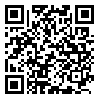BibTeX | RIS | EndNote | Medlars | ProCite | Reference Manager | RefWorks
Send citation to:
URL: http://ijme.tums.ac.ir/article-1-145-en.html
Breaking bad news to the patients does not back to a long history and is a controversial issue between patients and physicians. Many physicians are reluctant to breaking bad news to patients and this is not desirable for most patients. For example, in Northern European countries and United States, most physicians usually break bad news to the patients, while in Southern and Eastern European countries or many Asian countries they would not do so. In Iran, physicians prefer to break bad news to patient's family rather than the patient. Cultural differences also influence people's viewpoints about breaking bad news. In Western countries, most people agree with breaking bad news to patients while it is not common in the other populations. Nowadays, the dominant view in the most countries is that it is the duty of the physicians to break bad news to patients. Some advantages of breaking bad news to patients including strengthening the trust between physician and patient, preventing non - maleficience, increasing patients satisfaction and reducing legal action against the doctors. There are some exceptions to breaking bad news the most important is serious psychological damage to the patient. Quality and quantity of information that should be released depends on situation of each patient. Breaking bad news needs specific communication skills and physicians must be trained for this purpose.
Accepted: 2013/06/22 | Published: 2017/09/27
| Rights and permissions | |
 |
This work is licensed under a Creative Commons Attribution-NonCommercial 4.0 International License. |





